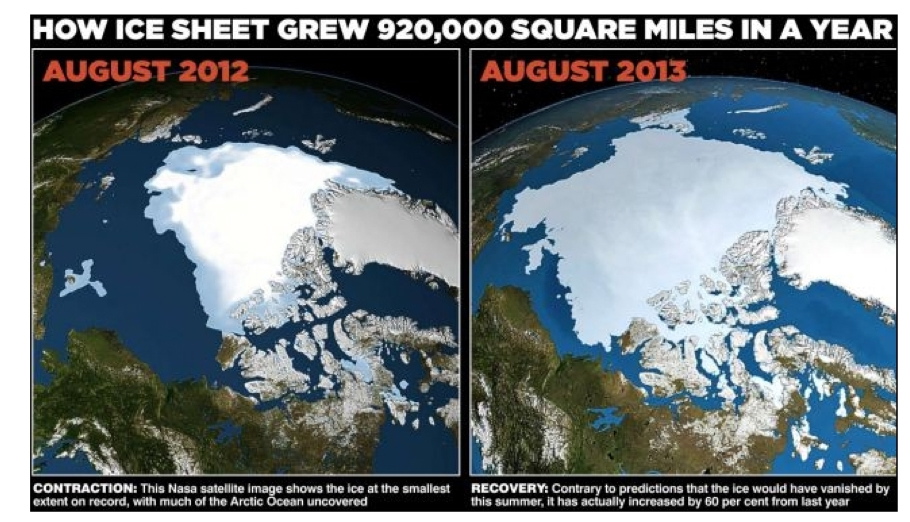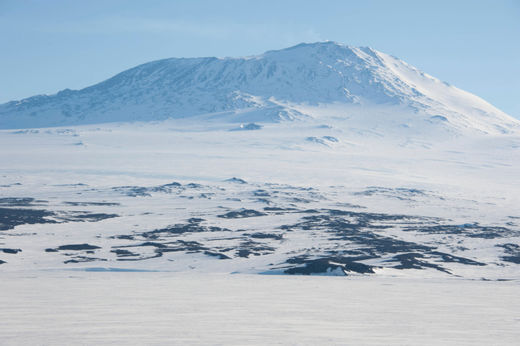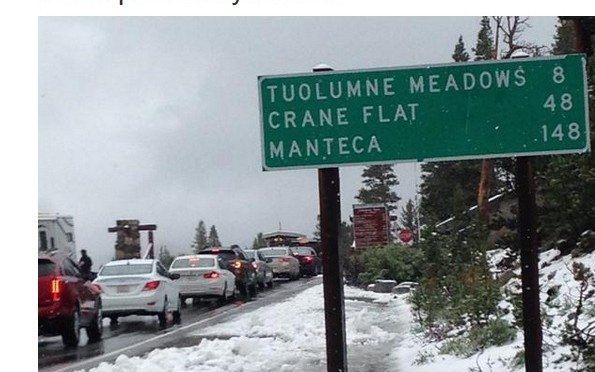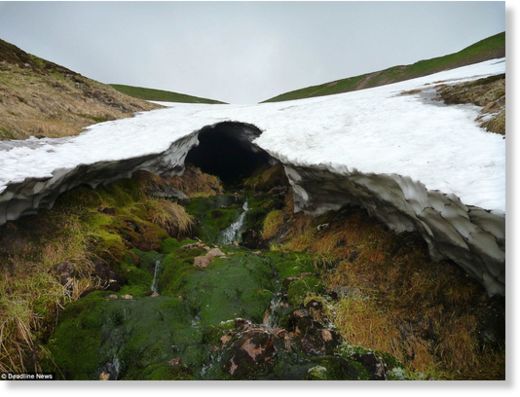Inconvenient study: Seafloor volcano pulses may alter climate – models may be wrong
Anthony Watts /
20 hours ago
February 5, 2015
New data show strikingly regular patterns, from weeks to eons
This topographic map of Earth’s ocean floor in the Atlantic ocean reveals thousands of sub-oceanic volcanoes along the mid-Atlantic ridge. Source:
http://www.sciencemag.org/content/346/6205/32.summary
From The Earth Institute at Columbia University:
Vast ranges of volcanoes hidden under the oceans are presumed by scientists to be the gentle giants of the planet, oozing lava at slow, steady rates along mid-ocean ridges. But a new study shows that they flare up on strikingly regular cycles, ranging from two weeks to 100,000 years–and, that
they erupt almost exclusively during the first six months of each year. The pulses–apparently tied to short- and long-term changes in earth’s orbit, and to sea levels–may help trigger natural climate swings.
Scientists have already speculated that volcanic cycles on land emitting large amounts of carbon dioxide might influence climate; but up to now there was no evidence from submarine volcanoes. The findings suggest that models of earth’s natural climate dynamics, and by extension human-influenced climate change, may have to be adjusted. The study appears this week in the journal
Geophysical Research Letters.
“People have ignored seafloor volcanoes on the idea that their influence is small–but that’s because they are assumed to be in a steady state, which they’re not,” said the study’s author, marine geophysicist Maya Tolstoy of Columbia University’s Lamont-Doherty Earth Observatory. “They respond to both very large forces, and to very small ones, and that tells us that we need to look at them much more closely.” A related study by a separate team this week in the journal Science bolsters Tolstoy’s case by showing similar long-term patterns of submarine volcanism in an Antarctic region Tolstoy did not study.
Volcanically active mid-ocean ridges crisscross earth’s seafloors like stitching on a baseball, stretching some 37,000 miles. They are the growing edges of giant tectonic plates; as lavas push out, they form new areas of seafloor, which comprise some 80 percent of the planet’s crust. Conventional wisdom holds that they erupt at a fairly constant rate–but Tolstoy finds that the ridges are actually now in a languid phase. Even at that, they produce maybe eight times more lava annually than land volcanoes. Due to the chemistry of their magmas, the carbon dioxide they are thought to emit is currently about the same as, or perhaps a little less than, from land volcanoes–about 88 million metric tons a year. But were the undersea chains to stir even a little bit more, their CO2 output would shoot up, says Tolstoy.
Some scientists think volcanoes may act in concert with Milankovitch cycles–repeating changes in the shape of earth’s solar orbit, and the tilt and direction of its axis–to produce suddenly seesawing hot and cold periods. The major one is a 100,000-year cycle in which the planet’s orbit around the sun changes from more or less an annual circle into an ellipse that annually brings it closer or farther from the sun. Recent ice ages seem to build up through most of the cycle; but then things suddenly warm back up near the orbit’s peak eccentricity. The causes are not clear.
Enter volcanoes. Researchers have suggested that as icecaps build on land, pressure on underlying volcanoes also builds, and eruptions are suppressed. But when warming somehow starts and the ice begins melting, pressure lets up, and eruptions surge. They belch CO2 that produces more warming, which melts more ice, which creates a self-feeding effect that tips the planet suddenly into a warm period. A 2009 paper from Harvard University says that land volcanoes worldwide indeed surged six to eight times over background levels during the most recent deglaciation, 12,000 to 7,000 years ago. The corollary would be that undersea volcanoes do the opposite: as earth cools, sea levels may drop 100 meters, because so much water gets locked into ice. This relieves pressure on submarine volcanoes, and they erupt more. At some point, could the increased CO2 from undersea eruptions start the warming that melts the ice covering volcanoes on land?
That has been a mystery, partly because undersea eruptions are almost impossible to observe. However, Tolstoy and other researchers recently have been able to closely monitor 10 submarine eruption sites using sensitive new seismic instruments. They have also produced new high-resolution maps showing outlines of past lava flows. Tolstoy analyzed some 25 years of seismic data from ridges in the Pacific, Atlantic and Arctic oceans, plus maps showing past activity in the south Pacific.
The long-term eruption data, spread over more than 700,000 years, showed that during the coldest times, when sea levels are low, undersea volcanism surges, producing visible bands of hills. When things warm up and sea levels rise to levels similar to the present, lava erupts more slowly, creating bands of lower topography. Tolstoy attributes this not only to the varying sea level, but to closely related changes in earth’s orbit. When the orbit is more elliptical, Earth gets squeezed and unsqueezed by the sun’s gravitational pull at a rapidly varying rate as it spins daily–a process that she thinks tends to massage undersea magma upward, and help open the tectonic cracks that let it out. When the orbit is fairly (though not completely) circular, as it is now, the squeezing/unsqueezing effect is minimized, and there are fewer eruptions.
The idea that remote gravitational forces influence volcanism is mirrored by the short-term data, says Tolstoy. She says the seismic data suggest that today, undersea volcanoes pulse to life mainly during periods that come every two weeks. That is the schedule upon which combined gravity from the moon and sun cause ocean tides to reach their lowest points, thus subtly relieving pressure on volcanoes below. Seismic signals interpreted as eruptions followed fortnightly low tides at eight out of nine study sites. Furthermore, Tolstoy found that all known modern eruptions occur from January through June. January is the month when Earth is closest to the sun, July when it is farthest–a period similar to the squeezing/unsqueezing effect Tolstoy sees in longer-term cycles. “If you look at the present-day eruptions, volcanoes respond even to much smaller forces than the ones that might drive climate,” she said.
Daniel Fornari, a senior scientist at Woods Hole Oceanographic Institution not involved in the research, called the study “a very important contribution.” He said it was unclear whether the contemporary seismic measurements signal actual lava flows or just seafloor rumbles and cracking. But, he said, the study “clearly could have important implications for better quantifying and characterizing our assessment of climate variations over decadal to tens to hundreds of thousands of years cycles.”
Edward Baker, a senior ocean scientist at the National Oceanic and Atmospheric Administration, said, “The most interesting takeaway from this paper is that it provides further evidence that the solid Earth, and the air and water all operate as a single system.”










 Reply With Quote
Reply With Quote





























Bookmarks